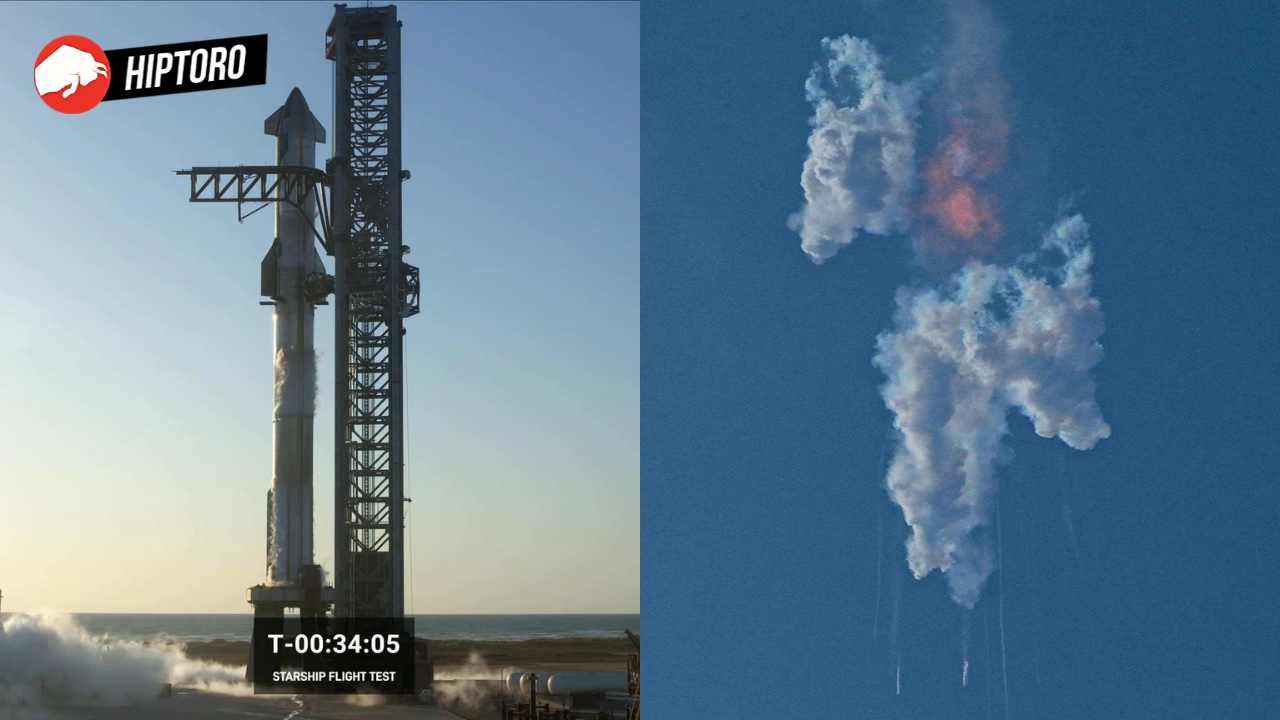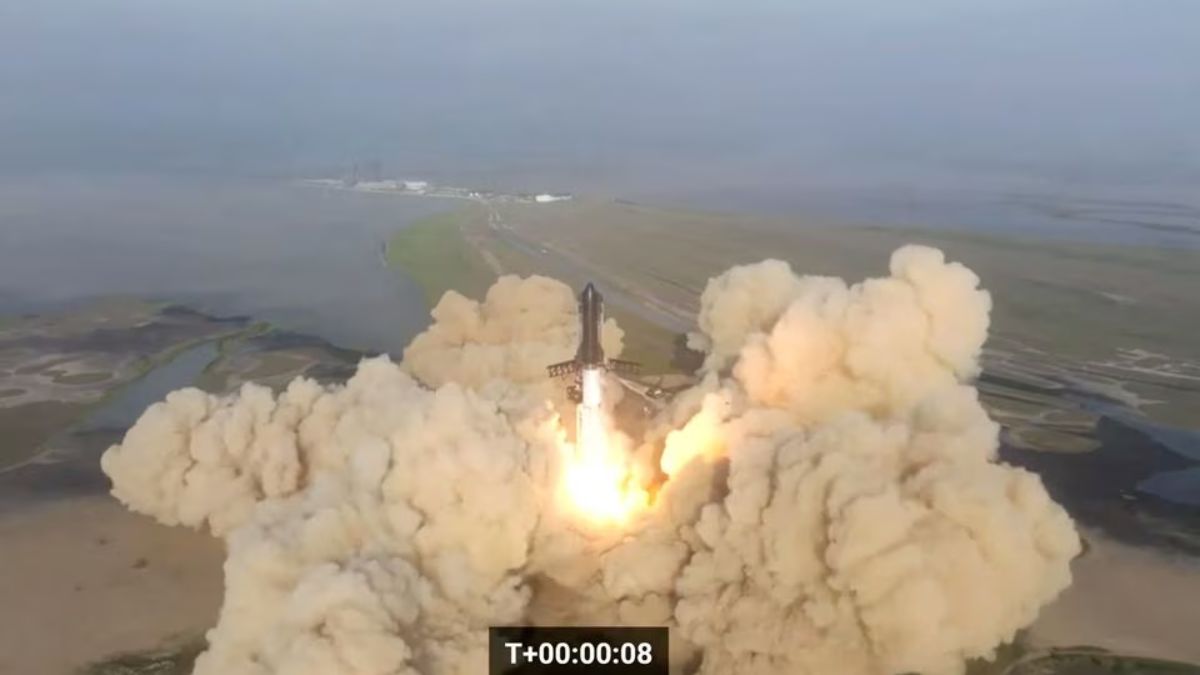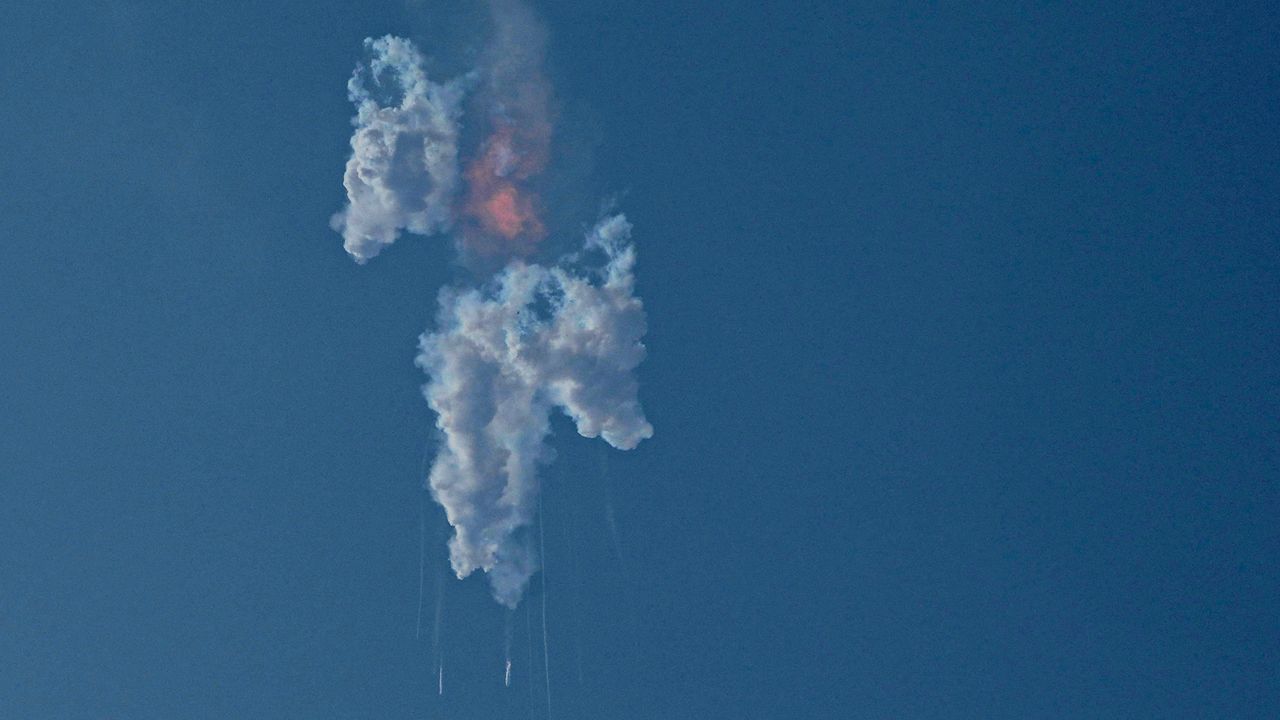SpaceX’s biggest and most powerful rocket ever launched from Texas but it blew up within minutes. It was a test flight that SpaceX hopes will be the first step toward sending people to Mars.
The 120-meter Starship rocket system took off at 8:33 a.m. local time (2:33 p.m. in the UK) on Thursday. Earlier this week, the launch was canceled because of an issue with the pressure. It picked up speed but then started to spin in the air. About four minutes after it left the ground, it blew up.
After the launch, it looked like the two parts of the rocket system, the booster and the cruise vessel, were not able to separate properly, which could have caused the spacecraft to fail. It wasn’t clear right away if the rocket blew up on its own or if the Flight Termination System, a failsafe that destroys the spacecraft if it goes too far off course, was turned on.
SpaceX had warned before that the chances of success were low and that the goal of the test flight, whether or not the full mission was completed, was to gather data.
Even after the rocket broke up, the workers at SpaceX still cheered.
As if the flight test was not exciting enough, Starship experienced a rapid unscheduled disassembly before stage separation,
SpaceX said in a statement on Twitter, referring to the explosion.
Congrats @SpaceX team on an exciting test launch of Starship!
Learned a lot for next test launch in a few months. pic.twitter.com/gswdFut1dK
— Elon Musk (@elonmusk) April 20, 2023
The uncrewed sub-orbital test was the first “fully stacked” test. The Starship cruise ship, which will eventually carry up to 100 astronauts, was put on top of the Super Heavy booster rocket. The 33 Raptor engines on the Super Heavy rocket gave the test the huge amount of thrust it needed.
The huge spaceship is 10 meters taller than the Saturn V rocket that sent people to the moon in 1969. It is almost as long as three-passenger jets.
BREAKING: SpaceX Starship rocket explodes in midair after launching as the boosters failed to separate from the rocket. https://t.co/8ENh7lSbSv pic.twitter.com/wTqBgYtYMo
— ABC News (@ABC) April 20, 2023
Last week, Elon Musk, the founder of SpaceX, got the go-ahead from the Federal Aviation Administration for the launch to take place.
Both the upper and lower parts of the system are made to safely return to Earth and land softly so that they can be used again. Musk says that because rockets can be used more than once, they are much cheaper than what NASA can offer.
NASA tries to avoid risk, but SpaceX has a history of letting test flights blow up. Musk says that the private company learns more about what can go wrong when things go wrong. SpaceX built its own spaceport, called Starbase, to launch its rockets. It is on the Gulf of Mexico in Boca Chica, Texas. Several more starships are already being made for tests that will happen in the future.
Musk said that he made the starship, which used to be called the BFR (which many people thought stood for “Big F*cking Rocket”) so that people could eventually live on other planets. To do this, he wants to start settling on Mars, which he said was necessary to save humanity in case something like a nuclear war or an asteroid strike wipes out life on Earth.
SpaceX says that the Starship, which can carry up to 150 tons of cargo, will be able to carry dozens of people on long-term trips between planets. It already has a privately funded trip around the moon for 11 people planned for this year, but that schedule now seems impossible. As part of its Artemis program, NASA has also hired SpaceX to put people, including the first woman, on the moon as soon as 2025. The date is considered to be too ambitious.
The company has said that in the future, the spacecraft will also be used as a shuttle for commercial travel on Earth, with trips from London to Tokyo taking less than an hour.











